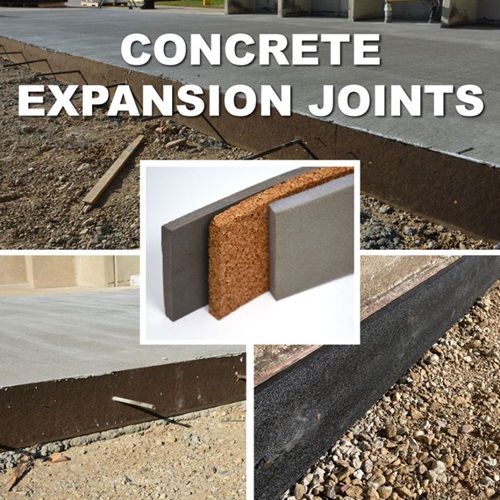Expansion Joint
When I was a kid, “Step on a crack, break your mama’s back” was echoed throughout the schoolyard, often the recitation as girls were jumping rope. Just to escalate everyone’s anxiety, some kid added a second idiom, “Step on a line, break your father’s spine.” These playground superstitions had us kids on high alert. Our otherwise carefree lives were disrupted by those horizontal sidewalk cracks. Until now, I never knew those sidewalk cracks had a name: concrete expansion joints. They also go by the name “control joints.”
What’s the Point of a Concrete Expansion Joint?
If concrete were elastic, contractors would have much simpler jobs. But it’s not. Concrete likes to move. Concrete expansion joints exist so that concrete has a buffer for temperature changes, earth movements, and vibrations (imagine the vibrations at an airport or on a railroad track, for example). Concrete expansion joints help concrete expand and contract as the temperatures change. You’ll also see this referenced as “thermal contraction and expansion.” Concrete expands in the heat and contracts in the cold weather temperatures. Reducing these stressors on your concrete helps prevent it from the pedestrian and structural hazards of cracking or buckling.
The Concrete Expansion Joint Categories
There are many different kinds of expansion joints, depending on your application. These include:
- Concrete Expansion Joints- These are designed to handle the movement in mass concrete pours
- Bridge Expansion Joints – These are designed to handle the movement, contraction and expansion on reinforced and prestressed concrete, composite material, and steel structures
- Masonry Expansion Joints – These use an elastomeric sealer to absorb the compression stress on the clay bricks and mortar from thermal expansion and contraction
- Railway Expansion Joints – Whenever railroad tracks are laid on a bridge, it becomes mandatory to place an expansion joint in the track to accommodate the base concrete structure expansion
- Pipe Expansion Joints – These break down into even further sub-categories, depending on the materials used:
- Rubber Expansion Joints
- Fabric Expansion Joints
- Metal Expansion Joints
- Toroidal Expansion Joints
- Gimbal Expansion Joints
- Universal Expansion Joints
- In-Line Expansion Joints
- Refractory Lined Expansion Joints
For the purpose of this blog, we will concentrate on expansion joint fillers used in concrete.
Concrete expansion joints are also commonplace in the following locations:
- Basement slabs
- Where a building meets the concrete
- Where the concrete meets a set of stairs
- Around manhole covers
- Any larger concrete slabs such as patios, driveways, or sidewalks
- Where a pool deck meets the coping
- Where one concrete slab meets another concrete slab
When Do You Install a Concrete Expansion Joint?
- Before the Pour: For a pre-concrete installation, you insert a flexible material to run along the joint length
- After the Pour: After you’ve installed concrete, you’ll need a cutting tool to create grooves in your poured concrete so you can place the joint materials
Why Concrete Expansion Joints Matter: The Legal Liability Factor
When you do not maintain sidewalks and concrete expansion joints, sidewalk buckling can occur. This creates hazards and injuries for pedestrians. Pedestrians walking on uneven sidewalks can easily trip and fall into oncoming traffic, causing life-long injuries or deaths. Buckled sidewalks create lawsuits for cities. People in wheelchairs have a difficult time navigating uneven planes. In fact, back in 2015, the city of Los Angeles settled one of the largest lawsuits of this kind. The city estimated they would need 30 years and $1.4 billion dollars to resolve its miles of noncompliant sidewalks.
When sidewalks aren’t maintained, depending on their locations, here are the parties who can end up embroiled in lawsuits:
- Municipal, county, or state government entities
- Homeowners or property owners
- Business owners
- Pavers and concrete contractors
- Private maintenance companies, or
- Cement manufacturers
Concrete Expansion Joint Materials
When you’re filling in the joints between concrete slabs there are a variety of materials you can use, depending on the situation:
- Metal – You’ll see these on railroads and bridges because they are better at handling the heat and pressure
- Asphalt – This material waterproofs and self-seals your joint
And The Three Most Gumby-Like Flexible Options
These concrete expansion joint materials bend and shape however you need them – think elaborate patio shapes — but they are equally ideal for sidewalks.
- Fiber
- Foam
- Cork
- Sponge/Rubber (also excellent for vibration-prone areas)

